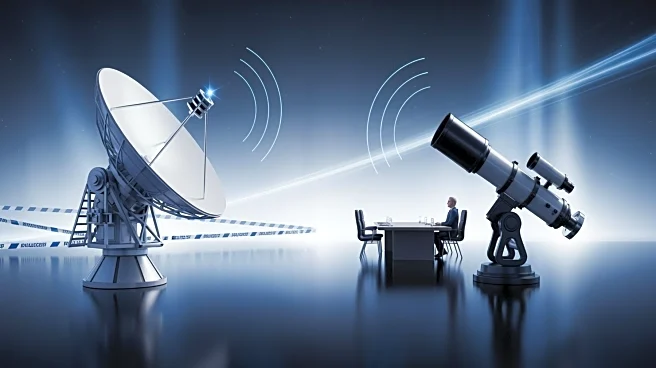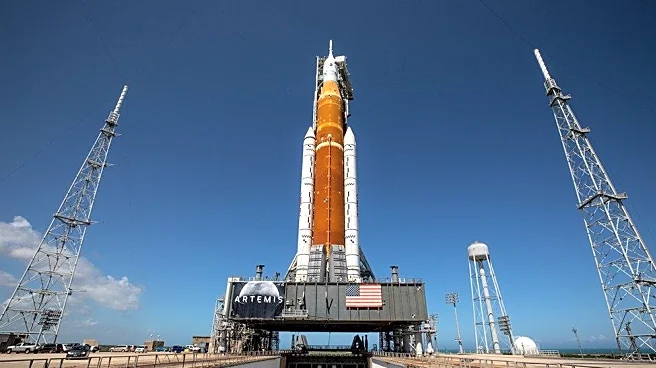What's Happening?
On November 19, 1969, NASA's Apollo 12 mission successfully landed on the Moon despite facing significant challenges during its launch. The spacecraft, carrying astronauts Charles 'Pete' Conrad Jr. and Alan
L. Bean, was struck by lightning twice shortly after liftoff, causing a major power outage. Quick thinking by EECOM engineer John Aaron, who instructed the crew to switch the Signal Conditioning Equipment to auxiliary power, restored telemetry and allowed the mission to proceed. The astronauts conducted extravehicular activities, deploying the Apollo Lunar Surface Experiments Package and collecting core samples. Despite initial fears of damage to the parachute compartment, the mission concluded successfully with a normal splashdown.
Why It's Important?
The Apollo 12 mission demonstrated the resilience and problem-solving capabilities of NASA and its astronauts, reinforcing the United States' leadership in space exploration during the late 1960s. The successful handling of the lightning strikes highlighted the importance of quick decision-making and collaboration between astronauts and mission control. This mission contributed valuable scientific data through the deployment of experiments on the lunar surface, advancing the understanding of the Moon's geology and environment. The lessons learned from Apollo 12 influenced subsequent missions, particularly regarding launch protocols in adverse weather conditions.












